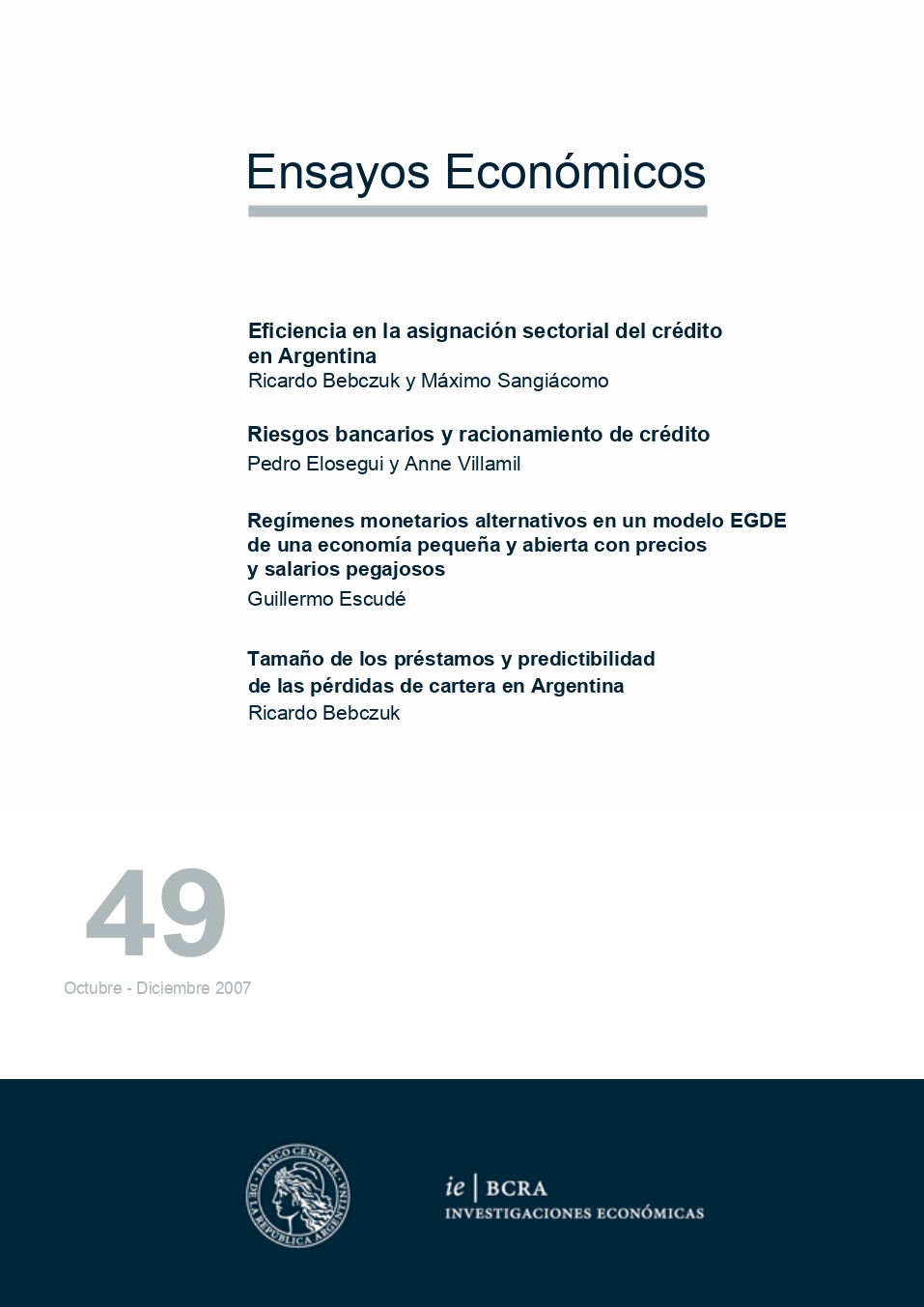Alternative monetary regimes in an DSGE model of a small open economy with sticky prices and wages
Keywords:
DSGE Models, Exchange Rate Policy, Monetary Policy, Small and Open Economy, Sticky Prices and WagesAbstract
The present work develops a dynamic and stochastic general equilibrium (DSGE) model for a small and open economy (SOE) that can be calibrated to simulate the macro dynamics of a semi-industrialized developing country such as Argentina. We consider a multilateral trade environment for non-primary goods, with the US and Europe as trading partners, and we assume that the Law of One Price does not apply to goods that the US and Europe trade with each other. We show that this makes the US multilateral real exchange rate (REER) a fundamental variable for the SOE's REER, in addition to its terms of trade. The SOE produces and consumes exportable and non-tradable goods using labor (and in the case of exportables, imports). There is a representative and perfectly competitive company that produces exportable goods and operates with perfectly flexible export and import prices. Monopolistic competition prevails with sticky prices (wages) for non-tradable goods companies (households). Such businesses (households) set prices (wages) subject to a price/wage adjustment function. Companies that look to the future and those that look to the past coexist. The latter use a mnemonic rule to change prices that gradually corrects their price towards that of the companies that optimize. The dynamic systems are completed by alternative exchange rate or monetary policy rules, including a fixed exchange rate, inflation targeting within a pure floating scheme, and inflation targeting within a managed floating scheme. The non-stochastic steady state for the alternative models is analyzed in detail and the log-linearized systems are obtained.
JEL classification: E52 ; F41 ; F31




